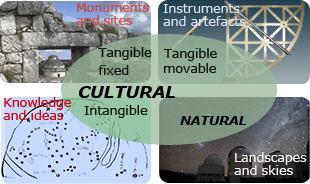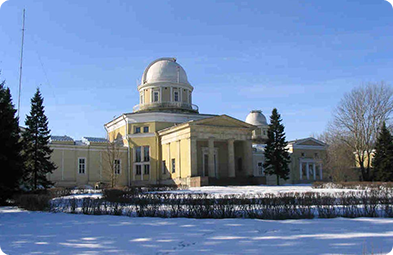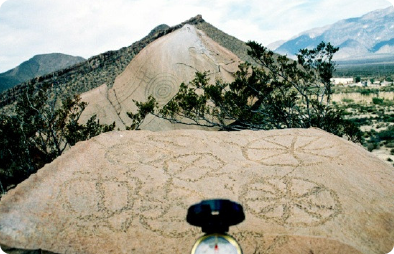
The tangible fixed heritage of astronomy: monuments and sites

Pulkovo observatory, Russian Federation. Photograph © Vladimir Ivanov; creative commons licence
Monuments, sites and cultural landscapes relating to astronomy stand as a tribute to the complexity and diversity of ways in which people rationalized the cosmos and framed their actions in accordance with that understanding. Such material testimonies of astronomy, found in all geographical regions, span all periods from prehistory to the present day. This includes, but is by no means restricted to, the development of modern scientific astronomy. This close and continual interaction between astronomical knowledge and its role within human culture is a vital element of the value of these properties.
The following may be identified as the principal types of tangible fixed astronomical heritage:
- Observatories as ‘scientific monuments’. The architectural approach that is standard when considering the value of a heritage site may only form a limited part of the assessment of a scientific site.
- Fixed instruments.
- Material representations of the results of astronomical observations and cognitive understanding:
- Tangible representations of observations, events and predictions (calendars, time measurements, predictions of eclipses, zodiacs, celestial representations, etc);
- Cosmological and symbolic representations (iconography, palaeography).
- The material products of the application of astronomy: constructions, architecture and urbanism related to applied astronomy and/or bearing astronomical information.
- Properties whose design and/or landscape setting have significance in relation to celestial objects or events.
- Cultural landscapes related to the history of astronomy and/or human cultural practices related to astronomy.

Boca de Potrerillos petrglyph site, Mexico. Photograph © Stanisław Iwaniszewski
The 'instruments' and 'material representations' bring in to focus the tricky question of the borderline between fixed property and movable artefacts. Material representations in the form, for example, of rock art are fixed; those in the form of paper records are movable. An instrument in the form of a fixed ‘monument’ could serve exactly the same purpose as a personal portable instrument or a ‘semi-movable’ instrument located in specific places for observation. A historical observatory may have movable domes or floors; an interferometer may have a fixed disc together with movable ones. This issue is not peculiar to astronomy but applies to science and technology heritage in general.
The contents of this page are based upon text in the ICOMOS-IAU Thematic Study no. 1 (2010). Original text © Clive Ruggles, Michel Cotte and the contributing authors.